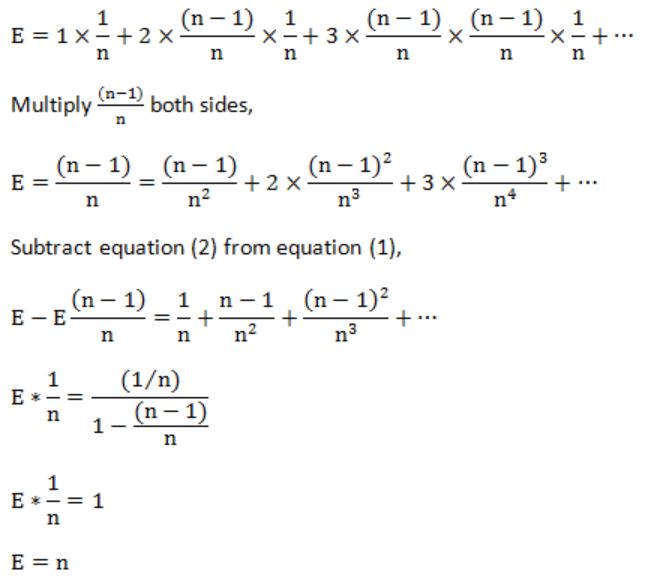Searching
Question 1 |
Consider the following algorithm for searching for a given number x in an unsorted array A[1...n] having n distinct values:
1. Choose an i uniformly at random from 1...n;
2. If A[i]=x then Stop else Goto 1;
Assuming that x is present in A, what is the expected number of comparisons made by the algorithm before it terminates?
n | |
n-1 | |
2n | |
n/2 |

Question 2 |
Which one of the following statements is false?
Optimal binary search tree construction can be performed efficiently using dynamic programming. | |
Breadth-first search cannot be used to find connected components of a graph. | |
Given the prefix and postfix walks over a binary tree, the binary tree cannot be uniquely constructed. | |
Depth-first search can be used to find connected components of a graph. |
Question 3 |
Let A be an array of 31 numbers consisting of a sequence of 0’s followed by a sequence of 1’s. The problem is to find the smallest index i such that A[i] is 1 by probing the minimum number of locations in A. The worst case number of probes performed by an optimal algorithm is _________.
5 | |
6 | |
7 | |
8 |
→ As in this array sequence of 0’s is followed by sequence of 1’s, the array is sorted. We can apply binary search directly without sorting it.
So number of probes = ceil(log2 31) = 4.954196310386876
⇒ here we are using ceiling so it becomes 5
Question 4 |
Consider the C function given below. Assume that the array listA contains n (> 0) elements, sorted in ascending order.
int ProcessArray(int *listA, int x, int n)
{
int i, j, k;
i = 0;
j = n-1;
do
{
k = (i+j)/2;
if (x <= listA[k])
j = k-1;
if (listA[k] <= x)
i = k+1;
}
while (i <= j);
if (listA[k] == x)
return(k);
else
return -1;
}
Which one of the following statements about the function ProcessArray is CORRECT?
It will run into an infinite loop when x is not in listA. | |
It is an implementation of binary search. | |
It will always find the maximum element in listA. | |
It will return −1 even when x is present in listA. |
k = (i+j)/2;
where k keeps track of current middle element & i, j keeps track of left & right children of current subarray.
So it is an implementation of Binary search.
Question 5 |
Start Sub = Middle Sub – 1 : | |
Start Sub = Middle Sub + 1 : | |
Stop Sub = Middle Sub – 1 : | |
Stop Sub = Middle Sub + 1 : |
Question 6 |
θ(n) | |
θ(1) | |
θ(log n) | |
θ(n log log n) |
Question 7 |
T(n) = T(n/2) + 1 | |
T(n) = T(n/2) + n | |
T(n) = 2T(n - 1) + 1 | |
T(n) = T(n - 1) + 1 |
B- applying masters theorem we get O(n) which is not the time complexity for binary search.
C- Using back substitution we get O(2n) which is not the time complexity for binary search.
D-Using back substitution we get time complexity as O(n) which is not of binary search.
